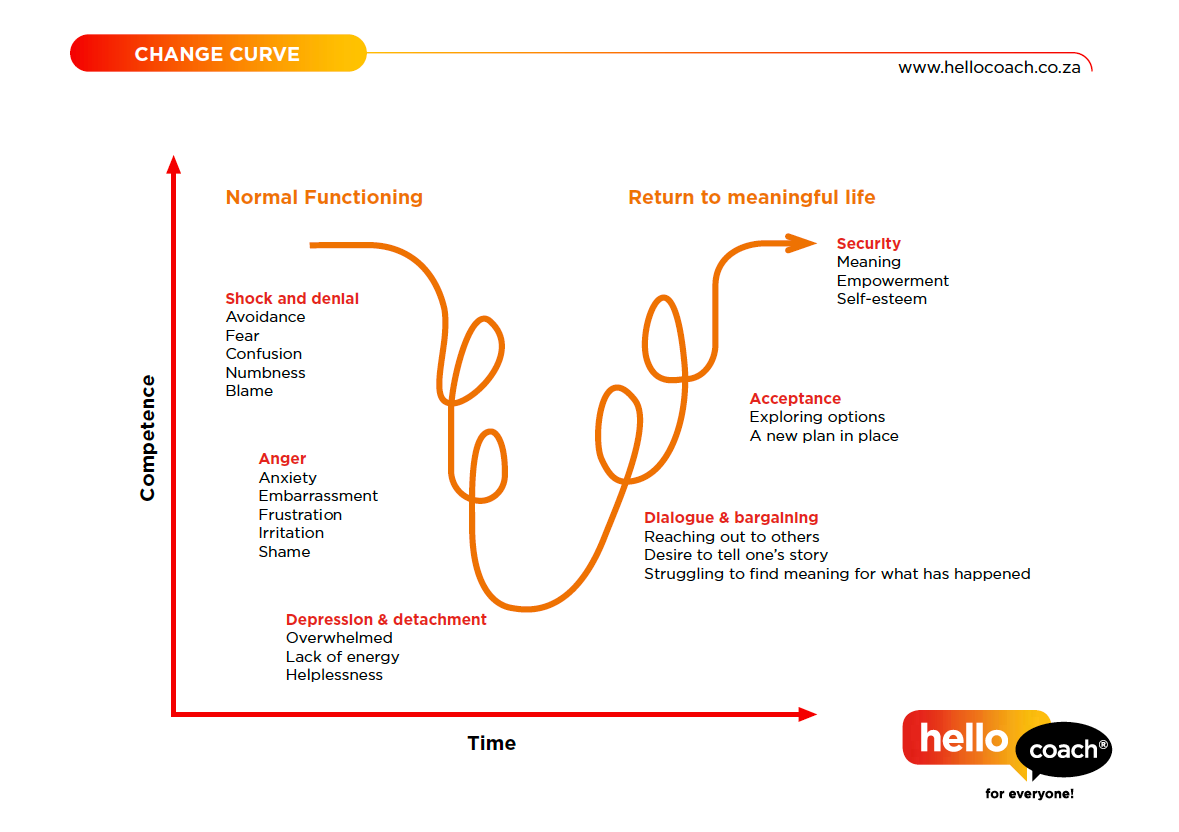You didn’t see it coming.
Or maybe you did – but that doesn’t make it easier. One moment, life felt predictable. The next, you’re standing at the edge of something unfamiliar – a job restructure, a relationship shift, a life curveball that wasn’t part of your plan. It’s like being dropped onto a winding path with no map – just a storm overhead, questions swirling, and the uneasy feeling that nothing will feel “normal” again for a while.
But here’s the truth: what you’re feeling is not only valid – it’s expected.
Welcome to the Change Curve. A psychological roadmap that explains the emotional terrain we all travel through during times of transition. Understanding it doesn’t take away the hard stuff – but it does make the road ahead feel a little less lonely… and a lot more manageable.
Understanding Change
Change is inevitable, yet it remains one of the most challenging aspects of personal and professional life. Whether it’s a career shift, a new relationship dynamic, or a global event shaking your foundation, understanding how change impacts you emotionally and mentally can empower you to navigate it more effectively. This is where the Change Curve model comes into play—a powerful tool for making sense of the chaos that change can bring.
What Is the Change Curve Model?
The Change Curve model outlines the emotional stages individuals typically experience when going through significant change. Originally developed based on Elisabeth Kübler-Ross’s work on grief, it has since been adapted for personal development and organisational transitions. The model maps how individuals move from initial shock to eventual acceptance and growth, offering valuable insights into the journey of adaptation.

Let’s break down the stages:
Shock and Denial
At the outset, change often comes as a surprise, leaving you feeling numb or in disbelief. Thoughts like, “This isn’t happening,” or “I can’t believe this,” are common. During this phase, people may avoid the issue altogether, holding onto a false sense of normalcy.
Anger and Frustration
As the reality of the situation sets in, it’s natural to feel anger or frustration. Questions like, “Why is this happening to me?” or “Who is to blame?” may arise. Emotions can become heightened, leading to anxiety, embarrassment, or irritation.
Depression and Detachment
Often referred to as the “valley of despair,” this phase can be the toughest. Feelings of helplessness, lack of energy, and withdrawal are common. Many struggle to see the light at the end of the tunnel.
Dialogue and Bargaining
Here, individuals start seeking meaning and exploring possibilities. They might reach out to others for advice, share their experiences, and attempt to find a silver lining or a compromise to make the situation more manageable.
Acceptance and Exploration
With acceptance comes clarity. You start to explore options and develop a plan to move forward. This stage is about taking ownership of the change and beginning to see its potential benefits.
Security and Empowerment
In the final stage, you embrace the new normal. Competence, confidence, and self-esteem are restored, paving the way for growth and empowerment. The change no longer feels like a loss but a step toward a meaningful life.
Why Is the Change Curve Important?
Understanding the Change Curve is invaluable because it normalises the emotions you experience during change. Rather than feeling stuck or alone, the model reminds you that such feelings are part of a natural process. It also highlights the importance of patience and self-compassion—real change takes time.
Practical Applications of the Change Curve
In the Workplace
Organisational changes like restructuring or adopting new systems can create resistance. Leaders who understand the Change Curve can better support their teams, offering guidance and empathy at each stage.
In Personal Life
Whether you’re navigating a breakup, moving to a new city, or starting a family, the Change Curve provides a roadmap for coping with emotional highs and lows. Recognising where you are on the curve can help you take proactive steps toward acceptance and growth.
Coaching
Our coaches use the Change Curve to help clients like you pinpoint your stage and work through challenges with tailored strategies. By addressing emotions constructively, you can accelerate your journey toward empowerment.
Tips for Moving Through the Change Curve
Acknowledge Your Emotions: Every stage serves a purpose. Allow yourself to feel without judgment.
Seek Support: Share your journey with friends, family, or a coach. Connection can ease the burden.
Focus on Small Wins: Celebrate the smallest steps toward acceptance and progress.
Practice Self-Care: Physical and emotional well-being go hand in hand. Prioritise rest, nutrition, and mindfulness.
Embrace the Journey of Change
The Change Curve reminds us that change, while uncomfortable, is a catalyst for growth. Each stage offers opportunities to learn, adapt, and emerge stronger. By understanding this process, you can approach change not as an obstacle but as an invitation to transform your life.
Are you navigating a significant change? Explore how our coaches at Hello Coach can guide you through the curve toward a brighter, more empowered future.





As a person i sometimes find me being in denial of changes that happens to me as a person. I am one person who always help people out, end up being judged and at some point, I end up regretting that why should i do it, i panic a lot and also in my personal life i took some other things lightly like a breakup i take it light and at the end i end having anger issues when other person comes and approaches me be in a relationship this leads me of not having self-confidence, my self-esteem go down.